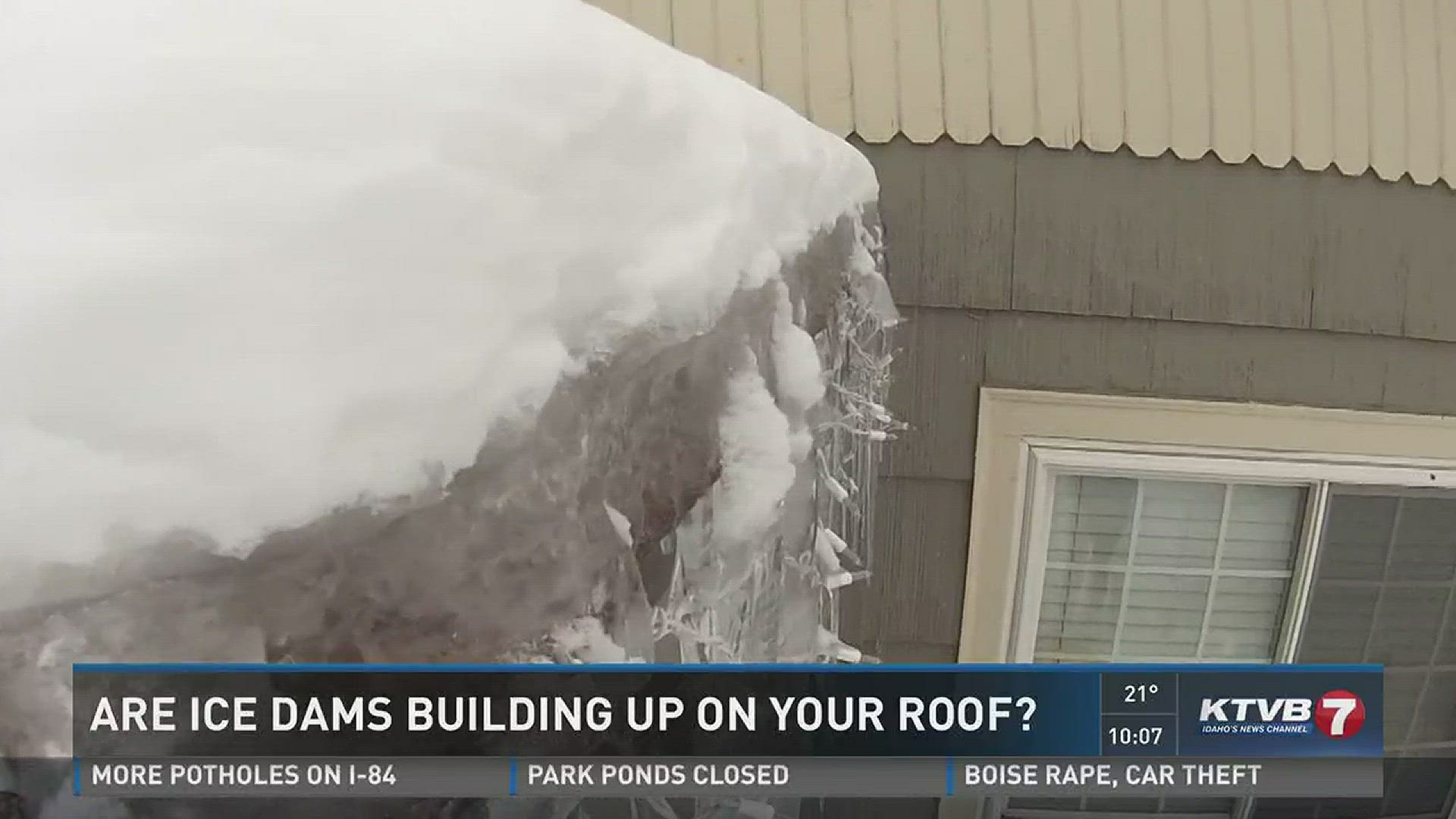BOISE -- Icicles are nice to look at, but they can also be a dangerous sign for your home or business: Where there are icicles, there may be ice dams.
Ice dams are an issue many of us may not be familiar with because we don't typically have to deal with them here in southwest Idaho. But with this long, intense winter, a lot of people are.
Ice dams are a pretty serious issue. You may have them and not even know. Roofing companies and plumbers say they've seen a big spike this year. If you take a look at the outside of your house and see a thick layer of solid ice built up along the edge of your roof, that means trouble.
"It's pretty serious," Hawaiian Built Roofing co-owner Sandra Daffer said. "It could happen to anybody."
Roofs piled with snow, freezing temperatures outside and warmer temps inside are the perfect concoction for icicles - and ice dams.
'You're just going to see a solid sheet of ice. It's going to go over your gutters, and your gutters are going to be totally frozen," Daffer added.
"If the edge of the roof looks way thicker than rest of the roof, you most likely have a dam building up right there," Express Plumbing Service operations manager Brad Jordan said.
According to the website "This Old House", this is how ice dams form:
Hot air rises to your attic, melts the snow on your roof but does not melt the snow on the eaves, which are the part of your roof that meet or overhang the walls. Thus, that snow melt freezes on the cold eaves and ice builds up. Water then backs up behind the dam because it has nowhere to go.
"[It] goes underneath your shingles, goes past your first course called your starter, travels sideways, [and] goes underneath your wood," Daffer said.
Ice can clog your gutters and downspouts, so Jordan says make sure your gutters and downspouts are clear.
This build-up and back-up can cause major issues: roofing experts say dams can loosen shingles on your roof and cause water to back up and leak into your house.
"Once weather like this hits and we've got all this precipitation, the ice builds up and there's not a lot you can do from there," Jordan added.
If dams do occur - besides anxiously awaiting warmer weather - you can use calcium chloride and try to de-ice your roof. If you have a low-pitch, flat roof and it is safe for you to get up there, you can try clearing the snow.
"This Old House" advises taking a fan into the attic and aiming it at the underside of the roof where water is leaking in. Contractors on the site also say try pulling snow off with a long-handled aluminum roof rake. It will instantly change the exterior temperature of your roof without damaging shingles.
You can help prevent ice dams from forming. Roofing experts say you can get a winter guard membrane to install over your starter to avoid the problem. Experts say invest in heated cables that equalize your roof's temperature.
"[There are] different heat tapes you can use to put on your roof's edge or into the gutters, and those help out quite a bit too," Jordan added.
For a more permanent fix, experts with "This Old House" advise keeping your entire roof the same temperature as your eaves. Make sure you have enough ventilation, add insulation, and seal off air leaks that might warm the underside of your roof.
Serious issues can arise when water gets into your house: ceilings can sag, paint can peel, and your insulation could get soggy.
To help prevent major issues with snow and ice, local roofing and plumbing companies say it's crucial to get roof and gutter inspections in the spring and in the fall. You can also call them and have them clear your snow and ice.

